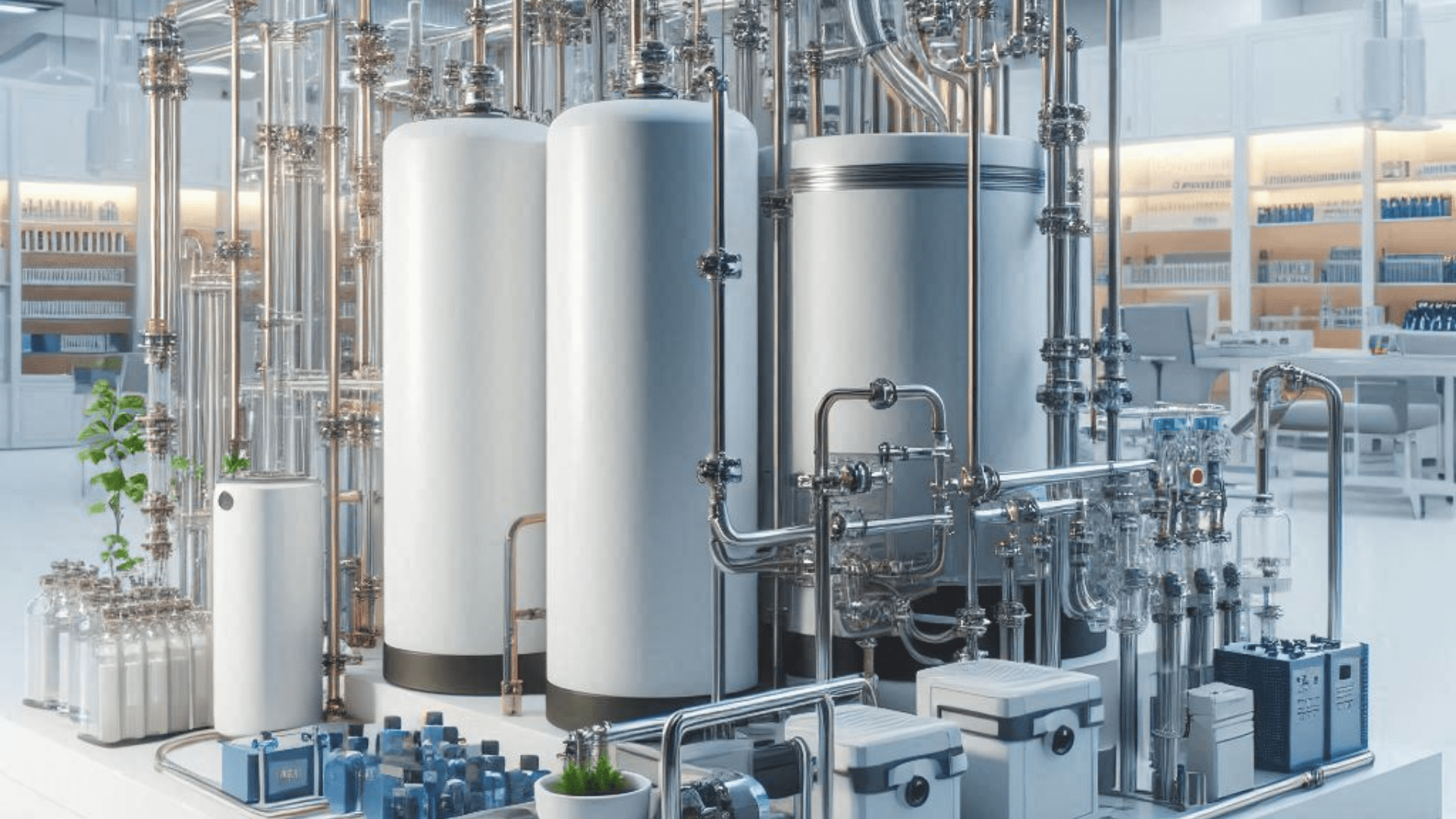A flow battery is a special type of rechargeable battery that stores energy in liquid form. These liquids flow through the battery to produce electricity. Unlike regular batteries that store power in a fixed space, flow batteries use tanks to hold energy. This makes them perfect for storing large amounts of energy, especially from solar or wind power. They are safe, long-lasting, and can be recharged easily. In this blog, we’ll explain how flow batteries work, why they are important, and how they could power our future in a clean and smart way.
What Is a Flow Battery?
A flow battery is a type of rechargeable battery where energy is stored in liquid electrolyte solutions that flow through a cell. Unlike traditional batteries that store energy in solid electrodes, flow batteries rely on the movement and reaction of liquids to store and release electricity.
What Is The Best Energy Storage Solution In Easy Steps.
The Growing Importance of Energy Storage
As we move towards using more solar panels and wind turbines for our electricity, we face one big problem — these energy sources don’t work all the time. The sun isn’t always shining, and the wind doesn’t always blow. That means the power they create can go up and down, depending on the weather or time of day.
But our need for electricity stays the same — we still want power at night, on calm days, or during cloudy weather.
This is why energy storage is so important. It helps us save the extra energy made during sunny or windy times and use it later when there’s no sun or wind.
Flow batteries are great at doing this. They act like a giant power bank. When there’s more energy than we need, they store it. And when energy is low, they release it to keep everything running smoothly — lights, fans, machines, and more.
Best Tips for Energy Efficient Buildings.
How Do Flow Batteries Work?
Flow batteries might sound complicated, but once you break them down, they’re actually pretty easy to understand. Let’s look at the main parts and how they work together to store and deliver electricity.
Core Components of a Flow Battery
1. Electrolyte Tanks
Think of these like two big water tanks — but instead of water, they’re filled with special liquids called electrolytes. These liquids carry the energy. There are usually two tanks: one holds the positive electrolyte, and the other holds the negative.
2. Electrochemical Cell Stack
This is the heart of the battery. When the liquids from the tanks flow into this part, a chemical reaction happens. This reaction creates electricity, which can be used to power homes, buildings, or even entire communities.
3. Pumps and Flow System
To get the liquid electrolytes moving, the battery uses pumps. These pumps push the liquids from the tanks, through the cell stack (where energy is made), and then back to the tanks. This flow keeps the system running smoothly and allows it to charge and discharge over and over.
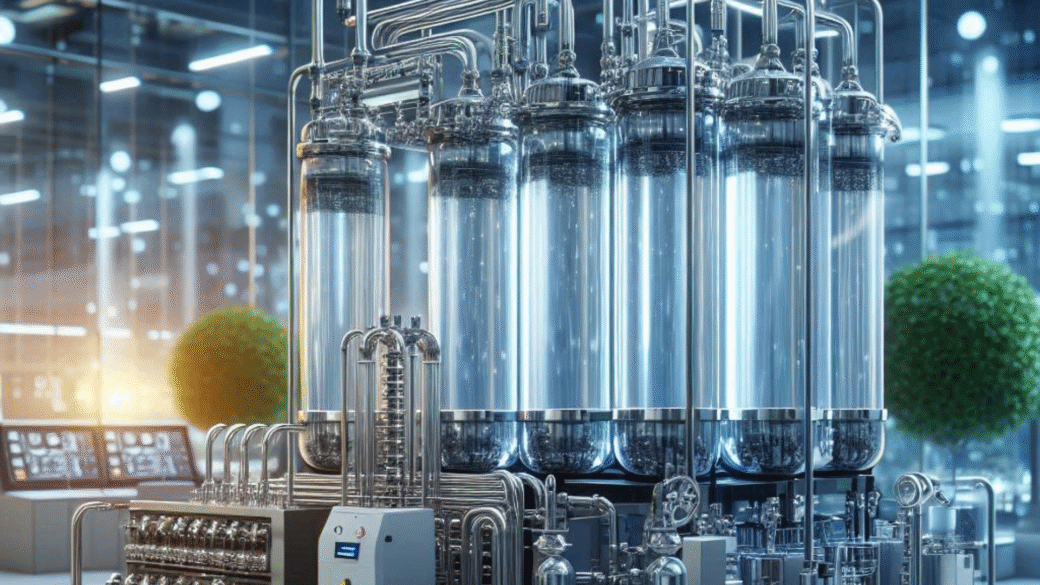
The Chemical Process Behind Energy Storage
Here’s where the real action happens:
- When you use the battery (discharging), the two liquids flow through the cell stack and react with each other. This reaction releases electrons, which is just a fancy way of saying it makes electricity.
- When you charge the battery, the process runs in reverse. Electricity (from solar panels, for example) is used to rebuild the chemical energy in the liquids so they can be used again later.
In Simple Term
- The tanks are rivers of energy-filled liquid.
- The pumps move the “river” through the battery system.
- The cell stack is the water wheel that spins and generates electricity.
What Is Smart Grid and Energy Management In Simple Way
Types of Flow Battery
There are different kinds of flow batteries, and each one works a little differently based on the materials they use. Let’s go through the main types in simple terms:
Vanadium Redox Flow Battery (VRFB)
This is the most common type of flow battery. It uses a metal called vanadium in different forms to store and release energy. One of the biggest advantages of this battery is that it lasts a long time and is very safe to use. That’s why it’s popular in big energy storage projects.
Zinc-Bromine Flow Battery
This type uses zinc and bromine, which are both low-cost and easy to find. These batteries are known for being affordable and reliable, which makes them a good choice for use in factories, large buildings, and other business settings.
Iron-Chromium Flow Battery
This is an older kind of flow battery. It’s not used much these days, but it still has its place in certain situations where saving money is more important than high performance. It’s not as efficient as newer types but costs less.
Other Emerging Types
New ideas are also being tested. For example, scientists are working on flow batteries that use organic materials, which are better for the environment. Others are looking at using hydrogen and bromine. These new versions might be cheaper, cleaner, and easier to recycle in the future.
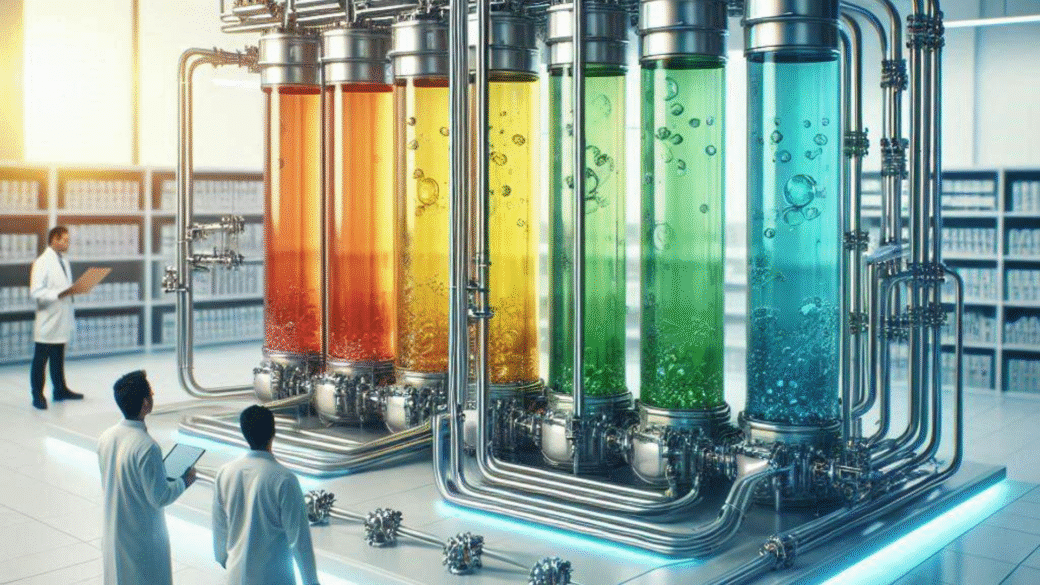
Advantages of Flow Battery
Long Lifespan
Most regular batteries, like lithium-ion, slowly lose their ability to hold a charge as time goes on. But flow batteries don’t have that problem. They can keep working well for more than 20 years without losing much of their power storage ability. This makes them a smart long-term investment.
Scalability
If you need to store more energy, you don’t need a whole new battery. With flow batteries, you can just make the tanks larger or add more tanks. This makes it easy to increase storage for bigger needs, like for factories, power plants, or entire neighborhoods.
Safety
Many batteries can catch fire or even explode if they overheat or are damaged. Flow batteries use liquids that aren’t flammable, which makes them much safer to use, especially in large buildings or remote areas.
Deep Discharge and High Cycle Life
Most batteries get damaged if you use up all their energy too often. Flow batteries, on the other hand, can be completely drained and recharged again and again — tens of thousands of times — without harming the system. This means you can rely on them every day without worrying about wearing them out quickly.
How Solar Water Heater Work Understand In Simple Way
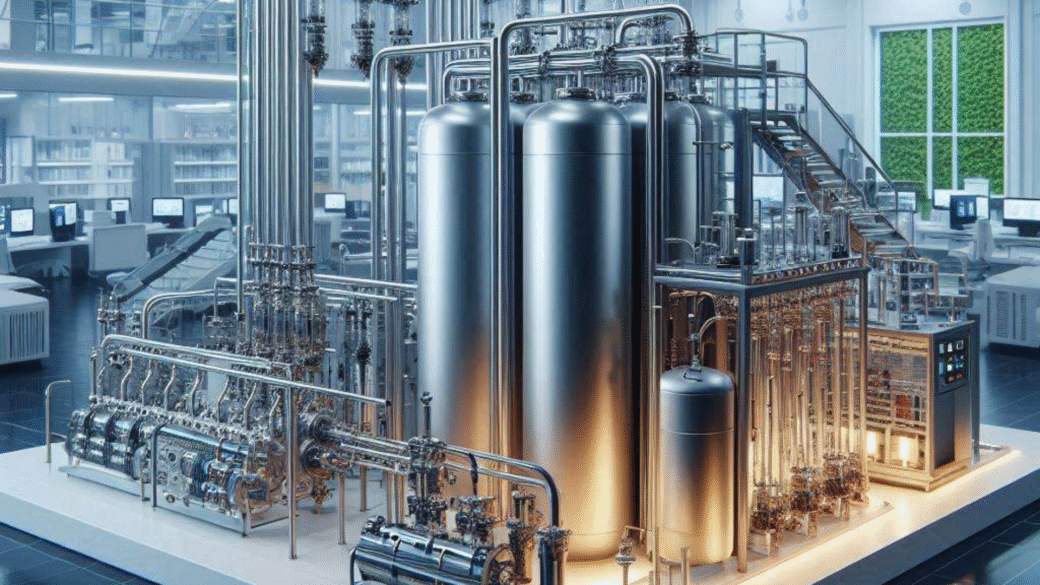
Disadvantages of Flow Battery
High Initial Cost
Setting up a flow battery system can be expensive in the beginning. The equipment, tanks, pumps, and overall installation need a lot of investment. This makes it harder for smaller businesses or homes to afford them right away, even though they save money in the long run.
Complexity of the System
Flow batteries are made up of several different parts like pumps, tanks, and control systems. Because of this, they are more complex than regular batteries. They also need more space to fit all the components, which can be a problem in small areas.
Lower Energy Density Compared to Lithium-Ion
Flow batteries are big and bulky for the amount of energy they store. This means they need more space to hold the same energy that a lithium-ion battery can store in a smaller size. That’s why flow batteries are not a good choice for things like electric cars or portable devices where saving space is important.
Applications of Flow Battery
Grid Energy Storage
Flow batteries help keep the power supply stable in big electricity networks, known as the grid. Sometimes, more electricity is produced than needed, like during the night when people are using less power. Flow batteries store this extra electricity and release it later when demand goes up, helping avoid blackouts and reducing waste.
Renewable Energy Integration
Solar panels and wind turbines don’t work all the time. The sun doesn’t always shine, and the wind doesn’t always blow. Flow batteries store extra energy when these sources are active and provide that energy when they’re not. This way, homes and businesses can still use clean power even when nature takes a break.
Off-Grid and Remote Areas
Some places don’t have access to the main electricity grid, such as remote villages or islands. In these areas, flow batteries can store energy from small solar or wind systems and provide power day and night. They help people live comfortably and run essential services without needing to connect to a big power network.
Industrial Applications
Large businesses like factories and warehouses use a lot of electricity. Flow batteries can help them save money by storing energy when it’s cheap and using it when prices go up. They also keep machines running during power cuts, avoiding delays and damage. It’s a smart and reliable backup solution for industries
What Is Smart Grid and Energy Management In Simple Way
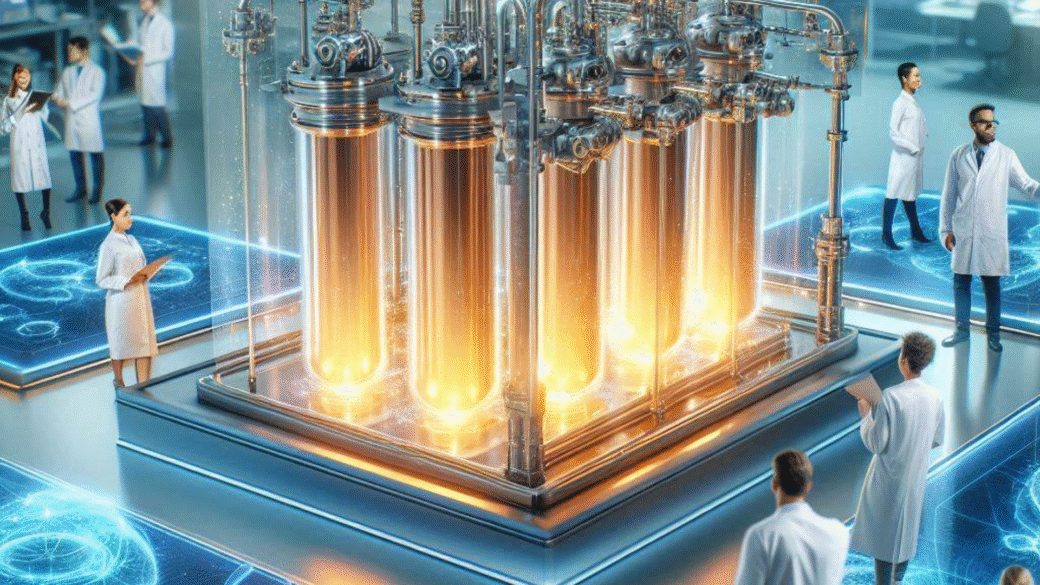
Future of Flow Battery Technology
Research and Innovation
Scientists and engineers around the world are working hard to make flow batteries even better. They are finding new ways to improve how the batteries work by using different types of liquids and cheaper materials. This helps make the batteries more efficient, more powerful, and more affordable. The goal is to make flow batteries a smart choice for both big industries and smaller users.
Market Growth Predictions
More and more people and companies are becoming interested in flow batteries. Because of this, experts believe that the market for flow batteries will grow very fast. In fact, by the year 2030, the total value of flow batteries sold around the world is expected to be more than 1.5 billion US dollars. That means more flow batteries will be used in homes, factories, and power stations.
Government Support and Policies
Governments in many countries are helping to promote flow battery technology. They are offering financial support, tax benefits, and other programs to encourage companies to invest in this technology. This support helps speed up the use of flow batteries in real-world projects and makes it easier for businesses to adopt cleaner and more reliable energy solutions.
Conclusion
So, what is a flow battery? It’s more than just a power storage device — it’s a game-changer for the future of renewable energy and grid stability. With their long lifespan, high safety, and scalability, flow batteries are poised to become a vital part of our clean energy future. Sure, they’re not perfect — yet. But innovation is happening fast, and they may soon power our homes, cities, and industries more reliably than ever before.
FAQs
Are flow batteries better than lithium-ion?
It depends on the application. For long-term stationary storage, flow batteries are more durable and safer. For mobile use, lithium-ion is better due to higher energy density.
How long do flow batteries last?
Flow batteries can last 20+ years and withstand over 10,000 cycles, making them extremely reliable.
Can flow batteries be used in electric vehicles?
Not currently. They’re too bulky and have lower energy density compared to lithium-ion batteries, which are more suited for EVs.
Are flow batteries eco-friendly?
Yes! They are often made with non-toxic, recyclable materials and have a low environmental footprint over their lifespan.
What is the cost of a flow battery?
The initial setup cost is higher — often ₹30–50 lakh for commercial-scale systems — but operational costs are low, and longevity makes them economically viable in the long run.
